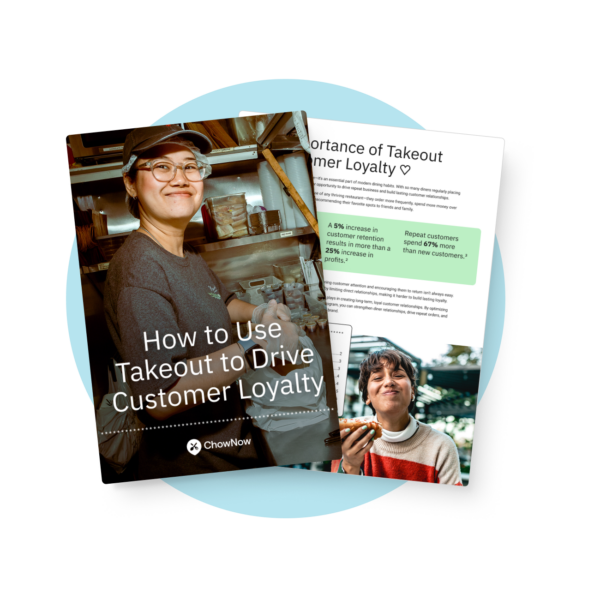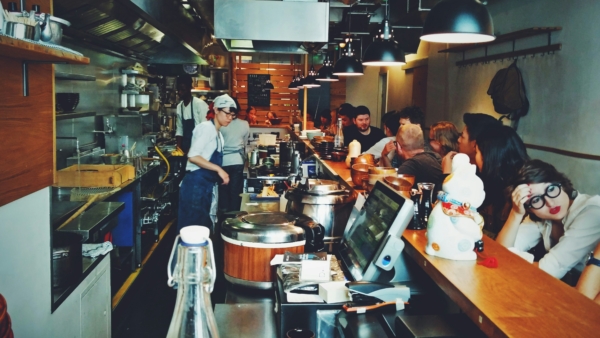Restaurant Operations Management: A Guide for Restaurant Owners

Running a restaurant is a balancing act.
Every day, you’re juggling staff, food quality, inventory, customer service, purchasing, and more—all while trying to cultivate a dining experience that wows your customers enough to keep them coming back.
It’s tough, and can’t be done passively.
Without a strong system in place, even the best restaurants in the world will struggle with unhappy customers, high turnover rates, wasted inventory, and razor-thin profit margins.
But when done right, you’ll see your restaurant run like a well-oiled machine where every detail falls into place effortlessly—staff works seamlessly together, service flows smoothly, costs stay under control, and customers leave happy, eager to return.
In this guide, you’re going to learn:
- The key components of effective restaurant operations management
- Common challenges restaurant owners face (and how to solve them)
- Best practices to run a more efficient and profitable restaurant
Let’s explore what it takes to manage restaurant operations like a pro.
What is Restaurant Operations Management?
Restaurant operations management is the art and science of keeping a restaurant running smoothly, creating order in a naturally chaotic environment.
It’s the behind-the-scenes structure that keeps service going without incidents, costs under control, and employees engaged—all while delivering a consistently great dining experience.
It’s not just about putting out fires when problems arise; it’s about building systems that prevent those fires in the first place.
When operations are well-managed, scheduling conflicts don’t derail shifts, inventory stays in check, and customers receive the same quality service every time they walk through the door.
On the flip side, poor operations can lead to inefficiencies that snowball—like staffing issues that slow down service, supply chain mishaps that throw off the menu, or rising costs that eat into profits.
Great restaurant operations don’t happen by accident. They’re the result of intentional planning, smart decision-making, and a commitment to continuous improvement.
The Key Components of Effective Restaurant Operations Management
A restaurant might have incredible food and a great location, but without strong operations, it won’t reach its full potential.
Success isn’t just about passion—it’s about structure. The best-run restaurants don’t leave things to chance—they rely on clear processes, well-trained teams, and smart decision-making to avoid costly mistakes.
1. Staffing and Labor Management
Your team is the heart of your restaurant, but managing staff is one of the biggest challenges operators face.
Effective labor management means hiring the right people, providing thorough training, creating efficient schedules, and building a culture that keeps employees engaged.
High turnover is a reality in the industry, but strong onboarding and retention strategies—like clear career paths, competitive pay, and positive work environments—can help keep great employees longer.
2. Inventory and Supply Management
Inventory control is a constant battle—order too much, and you waste food and money; order too little, and you risk running out of the ingredients you need to make customer favorites.
Successful restaurant operators use data-driven ordering, reliable supplier relationships, and waste-reduction strategies to keep inventory lean without sacrificing quality.
Regularly tracking food usage and implementing first-in, first-out (FIFO) inventory management helps prevent spoilage and unnecessary losses.
3. Customer Service and Experience
Great food and drink is only truly enjoyed when it’s coupled with a great service experience.
Every touchpoint—from how customers are greeted to how quickly their food arrives—affects their perception of your restaurant.
Front-of-house teams need clear expectations, strong training, and a service mindset that ensures guests feel valued. Small details, like remembering regular customers’ preferences or handling complaints with grace, can turn a one-time diner into a loyal regular.
4. Kitchen and Food Efficiency
A well-run kitchen keeps food quality high and service times fast. Standardized recipes, efficient prep work, and strong communication between back-of-house and front-of-house teams prevent bottlenecks.
Restaurants that streamline their kitchen operations can handle busy rushes without sacrificing consistency, ensuring that every menu item meets your and customer expectations.
5. Financial Management
At the end of the day, a restaurant needs to be profitable to survive. This means budgeting, tracking expenses like food and labor, and adjusting pricing to balance profitability with customer appeal.
Regularly analyzing sales data and cost reports can help restaurant owners make informed decisions that improve their bottom line—without cutting corners on quality.
6. Compliance and Food Safety
Health and safety regulations are non-negotiable in the restaurant industry. A well-managed operation ensures food is stored, prepared, and served according to local health codes.
This includes everything from proper refrigeration and sanitation procedures to regular staff training on food handling.
Ignoring compliance can lead to fines, bad press, or even shutdowns—so having clear protocols in place is mandatory.
7. Marketing and Customer Engagement
Even the best-run restaurant won’t thrive if no one knows about it.
A strong marketing strategy—whether through social media, email campaigns, or loyalty programs—helps bring in new customers and keep existing ones coming back.
Restaurants that integrate marketing into their operations see more consistent foot traffic and build stronger customer relationships over time.
Common Challenges in Restaurant Operations (and How to Solve Them)
Every restaurant faces operational hurdles—the best way to overcome these challenges is to not be reactive, but proactive.
By putting systems in place to effectively deal with random dilemmas, you’ll prevent them from derailing your business.
Here’s how to tackle some of the most common issues restaurant operators face.
1. High Turnover and Staffing Issues
With a turnover rate of 70%-80%, the hospitality industry experiences some of the highest employee churn of any sector.
Constantly recruiting and training new employees is both costly and disruptive. A lack of engagement, unpredictable schedules, and burnout are major factors driving staff to leave.
How to Solve It:
- Hire with retention in mind—look for candidates who fit your restaurant’s culture, not just the job description.
- Invest in proper training and onboarding so employees feel confident and prepared.
- Offer clear career growth opportunities to keep employees engaged.
- Improve workplace culture with fair scheduling, competitive pay, and open communication.
2. Food Waste and Supply Chain Disruptions
Unreliable suppliers, fluctuating food costs, and excessive waste can quickly eat into a restaurant’s bottom line. Ordering too much leads to spoilage, while ordering too little results in unhappy customers and lost revenue.
How to solve it:
- Use data-driven ordering to track inventory closely to forecast demand accurately and avoid overstocking.
- Implement first-in, first-out (FIFO) inventory management to minimize waste.
- Build strong relationships with multiple suppliers to reduce dependency on any one vendor.
- Get creative with menu planning—designing dishes that use overlapping ingredients can reduce waste and make sourcing easier.
- Train staff on portion control and proper food storage to prevent unnecessary losses.
3. Inconsistent Customer Experience
A restaurant’s reputation hinges on consistency. If service or food quality varies from visit to visit, customers will be less likely to return.
Common culprits include poor training, lack of standard procedures, and communication breakdowns between front and back of house.
How to solve it:
- Develop Standard Operating Procedures (SOPs) for everything from food prep to customer interactions.
- Provide ongoing training to ensure staff understands service expectations.
- Use checklists and quality control measures to maintain consistency in food presentation and service.
- Encourage regular feedback from both customers and employees to identify areas for improvement.
4. Cost Management and Slim Margins
Profit margins in the restaurant industry are notoriously thin, so every dollar counts. Rising food costs, labor expenses, and unexpected overhead can quickly eat into profits if they aren’t closely monitored.
How to solve it:
- Track key financial metrics like food cost percentage, labor cost percentage, and total costs to identify areas where expenses can be reduced.
- Adjust pricing strategically—menu engineering can help showcase high-margin items while minimizing reliance on low-profit dishes.
- Leverage restaurant technology, such as POS systems and financial analytics tools, to gain deeper insights into spending and revenue trends.
- Regularly audit expenses and negotiate with vendors to keep costs in check.
5. Slow Table Turnover and Inefficient Service Flow
Even if a restaurant is fully booked, slow table turnover can limit revenue. Bottlenecks in the kitchen, inefficient service, or a lack of clear communication between front- and back-of-house teams can create long wait times and frustrated customers.
How to Solve It:
- Train staff on efficient table management, including knowing when to upsell and when to move service along.
- Optimize restaurant layout to ensure smooth traffic flow between kitchen, tables, and POS systems.
- Implement a reservation and waitlist system to balance walk-ins and reservations.
- Use handheld ordering devices to speed up communication between servers and the kitchen.
6. Adapting to Changing Customer Preferences
Customer expectations are always evolving—whether it’s dietary preferences, demand for faster service, or new ordering trends like ghost kitchens, online ordering, and direct delivery. Restaurants that fail to adapt risk losing customers to more active competitors.
How to Solve It:
- Regularly analyze customer feedback and adjust menu offerings to align with demand.
- Offer multiple ordering options, including takeout and delivery to cater to different customer needs.
- Keep branding fresh with seasonal promotions, direct marketing to customers, and a loyalty program to encourage repeat visits.
- Maintain a strong digital presence—an up-to-date menu, seamless online ordering, and direct communication with customers can help build long-term relationships.
The best way to stay ahead of these challenges is to tackle them proactively, with a solid plan in place before they turn into bigger problems, setting yourself up for long-term success.
Best Practices for Running a More Efficient Restaurant
Efficiency in a restaurant isn’t just about speed—it’s about every station and employee working in sync to keep service running seamlessly.
A restaurant is like a timepiece, where both the big and small gears must turn together perfectly to keep the clock running smoothly and on time.

Here are some of the best practices successful restaurants use to stay ahead.
1. Implement Standard Operating Procedures (SOPs) for Consistency
Restaurants thrive on consistency. Whether it’s how dishes are prepared, how servers greet guests, or how inventory is managed, having clear SOPs ensures every shift runs the same way—no matter who’s on the clock.
How to Implement It:
- Document essential processes, from opening and closing checklists to food prep guidelines.
- Train all staff on SOPs and reinforce them regularly.
- Use checklists and digital task management tools to keep teams accountable.
- Regularly update SOPs based on feedback and operational improvements.
2. Use Technology and Automation to Streamline Operations
Technology can reduce manual work, improve order accuracy, and help cut costs. Many restaurants rely on tools that handle online ordering, reservation management, scheduling, and even real-time inventory tracking.
How to Implement It:
- Invest in a POS system and integrate orders from takeout and online platforms.
- Use an online ordering system that allows customers to place direct orders without third-party fees.
- Automate staff scheduling with tools that predict labor needs and prevent over- or under-staffing.
- Implement a digital inventory system that tracks food usage and alerts you when stock is low.
3. Build a Culture of Accountability and Teamwork
A strong restaurant team operates seamlessly—everyone knows their role, trusts each other, and takes ownership of their work.
When employees feel accountable and valued, service quality improves, and turnover decreases.
How to Implement It:
- Set clear expectations for job roles and performance.
- Recognize and reward employees who go above and beyond.
- Foster open communication and encourage feedback from staff.
- Hold regular team meetings to align goals, solve issues, and boost morale.
4. Efficiency Is an Ongoing Process
The most successful restaurants treat operations management as a continuous process, always looking for ways to improve.
Tracking key metrics—like food cost percentage, labor costs, table turnover rates, and average check size—gives restaurant owners a clearer picture of where improvements can be made.
Reviewing reports from POS systems, inventory software, and customer feedback allows operators to fine-tune processes, cut unnecessary costs, and ensure the restaurant is running as efficiently as possible.
Take Control of Your Restaurant’s Success
Everything in this article boils down to one thing: being proactive about your restaurant’s operation management strategies.
When you take control of your systems, refine your processes, and stay ahead of challenges, you create a restaurant that runs smoothly, stays profitable, and keeps customers coming back.
Contact ChowNow to learn how tools like Order Aggregation and POS Integration can streamline your operations and make running your restaurant feel effortless.






